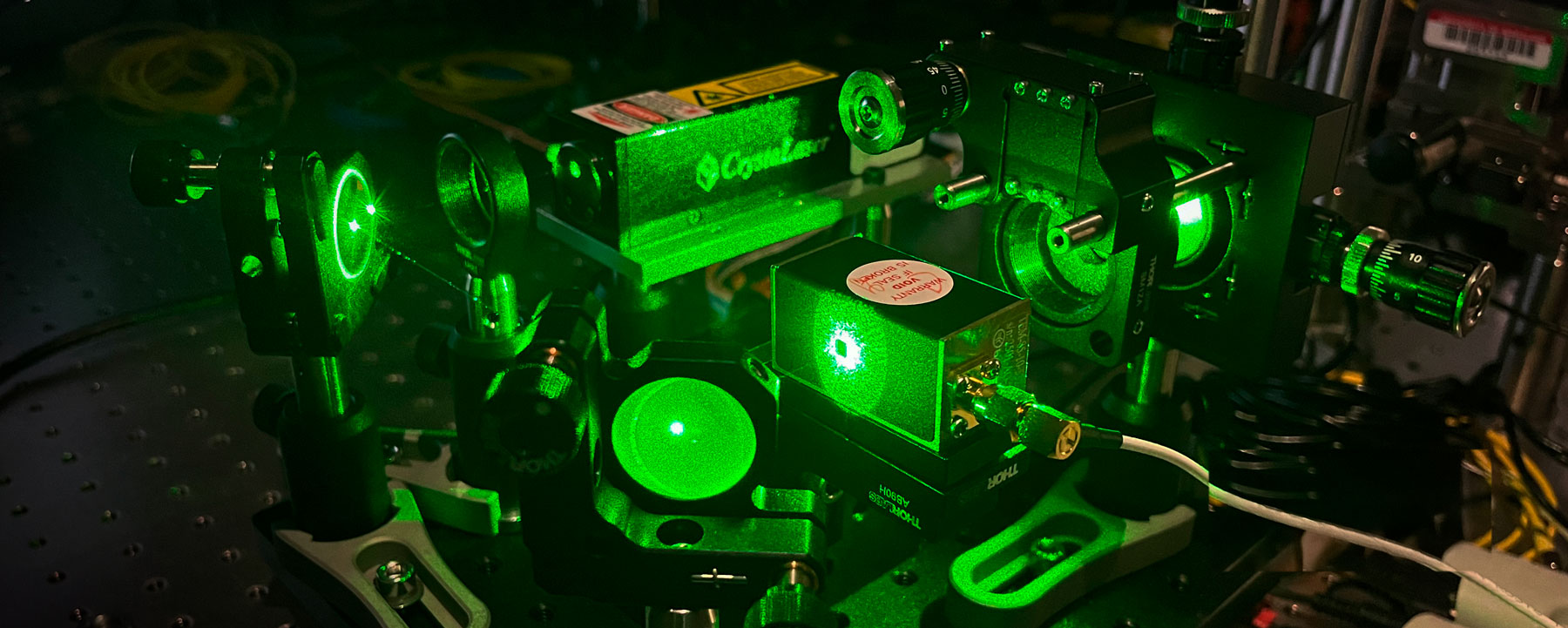
Welcome to the Quantum Photonics Laboratory at the University of Maryland. We are part of the Joint Quantum Institute and the Institute for Research in Electronics and Applied Physics. We are working to develop quantum technology based on nanoscale photonic and semiconductor devices for applications in quantum computation, communication, and sensing.
Topological photonics
In recent years topological photonics has been realized in multitude of platforms. It has gained attention due the presence of unidirectional chiral propagation of light via the edge states which are again immue to any disorder in the system. Such system can open path to plethora of application in many body physics, strong ight matter interaction , quantum hall physics of light. In our roup we focus on studying the strong light matter interaction via a topological waveguide in a planar photonic crystal geometry.
Quantum photonics
Photonic devices have been the dominant workhorse of data communication in the internet age. Rapid improvements in efficiency and sophistication are now extending these devices into the quantum regime, where single photons mediate interactions between embedded on-chip memories coupled to complex photonic circuits. We are studying methos to use integrated photonics to build large and complex quantum systems composed of photons and spins contained in a semiconductor chip.
Quantum confined emiters
Materials that confine electrons and holes in at least one dimension to quantum length scales exhibit unique quantum properties. This confinement can strongly modify both the optical and electronic properties of materials and produce strong quantum behavior. Notable examples include quantum wells, quantum dots, and atomically thin layered materials.
Low energy opto-electronics
The internet relies on opto-electronic devices to produce, route, and detect light. But the majority of opto-electronic devices today rely on weak interactions between light and matter, and therefore consume high powers. Our group studies strong interactions between light and matter at the nanoscale. In this regime interactions between single emitters and single photons can become extremely strong, enabing a new class of opto-electronic devices that operate at the lowest fundamental energy limit.
Zhili Yang
Where are they now?:
Apple
Shuo Sun
Research Areas:
- Strongly interacting light and matter
- Quantum photonic structures
Where are they now?:
Assistant Professor at the University of Colorado, Boulder
Kaushik Roy
Where are they now?:
Dupont Co.
Young Min Kim
Research Areas:
Quantum photonic structures
Where are they now?:
Assistant Professor at Colorodo Mesa University